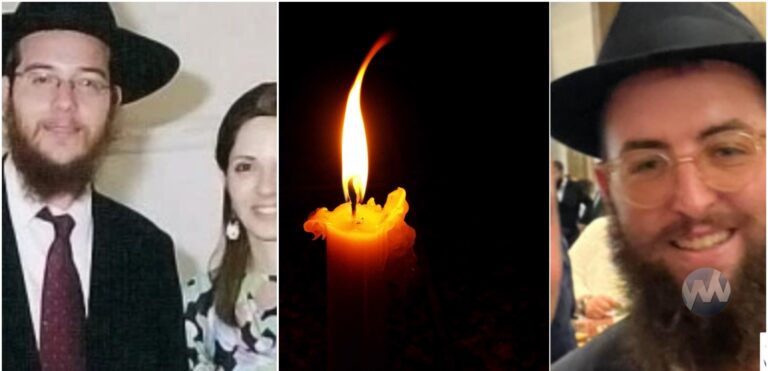By Rabbi Yair Hoffman for the Five Towns Jewish Times
IMPORTANCE
Chol HaMoed is a period of time that lies between Yom Tov and Chol. It is a time that should not be taken lightly. The Rambam (Hilchos Yom Tov 6:17) tells us that the Mitzvah of “V’samachta b’chagecha” applies on Chol HaMoed as well as on Yom Tov.
Both Rav Moshe Feinstein zt”l as well as Rav Yaakov Kamenetzky zt”l (Emes L’yaakov Siman 530:483) have ruled that on account of this, the obligation of drinking wine on Chol haMoed is similar to the obligation of drinking wine on Yom Tov. Rav Feinstein ruled that one should have wine at least once per day, while Rav Kamenetzky ruled that one should have it at every sit-down meal.
One should also have meat each day of Chol HaMoed (Igros Moshe OC III #68). The Mishna Brurah rules that ideally one should wash for bread on Chol HaMoed once at night and once in the day.
PLEASE HELP A VERY CHOSHUV HACHNASSAS KALLAH SITUATION
https://thechesedfund.com/zechornilah/hachnasaskallah
It is also the custom to wear Shabbos clothing. One should certainly avoid wearing weekday clothing, but wear clothing that are more choshuv than weekday clothing (MB 530:1).
It is important to recall that many people do not wear Tefillin on Chol HaMoed because of its elevated stature – that it is Yom Tov.
GARDENING AND LAUNDERING
Gardening is forbidden during this time as well.
Generally speaking all laundering is forbidden. However, one is permitted to spot-clean clothing that got soiled on Yom Tov or on Chol HaMoed (Emes L’Yaakov 534:498 Shulchan Shlomo 534:1).
If necessary, one may launder a child’s clothing, because children almost always soil their clothing. Rav Shlomo Zalman Auerbach zatzal ruled that the maximum age is seven years old. One may not add an adult’s clothing to the washing machine when doing the child’s clothes. As far ironing goes look in the next section.
One may also polish shoes on Chol HaMoed.
MALACHA ON CHOL HAMOED
Malacha work on Chol HaMoed is forbidden unless it fits into certain parameters. Unfortunately, the laws of Chol HaMoed are not well known. If any question comes up, a Rav should be consulted. There are essentially only five heterim for work to be done on Chol HaMoed. They are:
1] Tzorchei HaMoed – for the needs of Yom Tov
2] Davar Ha’Aved – If something will be ruined or destroyed if the work is not done. Permanent damage to a business is included under this heter.
3] Tzorchei Rabim – A great communal need, such as a broken Mikvah, Eruv, street, sewage pipe.
4] Poel V’ain Lo Mah L’echol – If someone has no food to eat and requires to make money in order to buy food.
5] Maaseh Hedyot – If it is an amateur action as opposed to a Maaseh Uman – a professional action. Repairing a car, for example, is generally a Maaseh Uman and is forbidden. Changing a tire is a Maaseh hedyot. Ironing pleats on a skirt is a Maaseh Uman. Ironing clothing to remove wrinkles is considered a Maaseh hedyot. Tailoring and dressmaking is a Maaseh uman and forbidden. Sometimes a temporary hem can be sewn very unprofessionally and that is a Maaseh hedyot. Driving a car would be a Maaseh uman but since everyone does it, the Poskim have explained that it is now considered a Maaseh hedyot.
PURCHASING ON CHOL HAMOED
One may purchase items that are necessary for the Moed. At times purchasing would be permitted under the heter of Davar HaAvaid. Rav Yaakov Kamenetzky zt”l ruled that a sale that happens rarely that will finish before Isru Chag is considered a davar HaAvaid and it would be permitted to make a purchase at this sale (Emes L’Yaakov 539:434). By the same token if one is not generally in that locale and one will not have an oppportunity to make that purchase after Yom Tov, it is also considered a davar haAvaid (ibid).
A Rav should always be consulted whenever any question arises regarding Chol HaMoed.
PLEASE HELP A VERY CHOSHUV HACHNASSAS KALLAH SITUATION
https://thechesedfund.com/zechornilah/hachnasaskallah
The author can be reached at [email protected]
PLEASE HELP A VERY CHOSHUV HACHNASSAS KALLAH SITUATION












3 Responses
Interesting anecdote:
The Pri Megadim, while hondling the halachos of chometz assur bhana’ah, relates that on chol hamoed he sat on a sack of flour during a chol hamoed trip on which he took his family to see a flour mill…. (and a family member asked if that is considered to be deriving hanaah from chometz)
Enjoy your trips and remember that it is a minhag yisroel!
The sha’ar hatziyun clearly states that one should wear Shabbos clothing on Hoshana Rabba, and one can easily deduce from the context there that one should not wear shabbos clothing on other days of Chol Hamoed; rather, one should wear nicer-than-regular-but-still-not-as-nice-as-shabbos-or-yom-tov clothing. What is rabbi Hoffman’s basis when he states that the Minhag is to wear shabbos clothing throughout Chol Hamoed (and when he implies that simply wearing nicer-than-regular-but-still-not-as-nice-as-shabbos-or-yom-tov is some sort of a b’dieved)? Is rabbi Hoffman simply stating what he has seen on the street? Because I don’t think we have a right to call something a Minhag simply because we have commonly seen it done.
Actually, I hadn’t checked up the shaar hatziyun inside for a while; I wrote my above comment from memory. Now that I have just reviewed the shaar hatziyun inside, I see that I should have asked much more shtark on rabbi Hoffman! In fact, the shaar hatziyun references a Magen avraham that he says apparently implies that — and these are the words of the Chofetz Chaim — “EIN HAMINHAG LILBOSH BIGDEI SHABBOS,” which means “IT IS NOT THE MINHAG TO WEAR BIGDEI SHABBOS {note the nuance in translation — I have provided the precise translation}.” For rabbi Hoffman to discard such a direct record of Minhag from such a source would require a very, very good raya! By the way, the shaar hatziyun in question is os dalet on the first amud of Chelek vav.